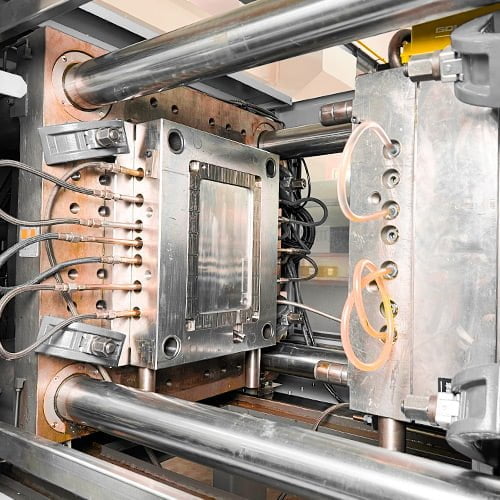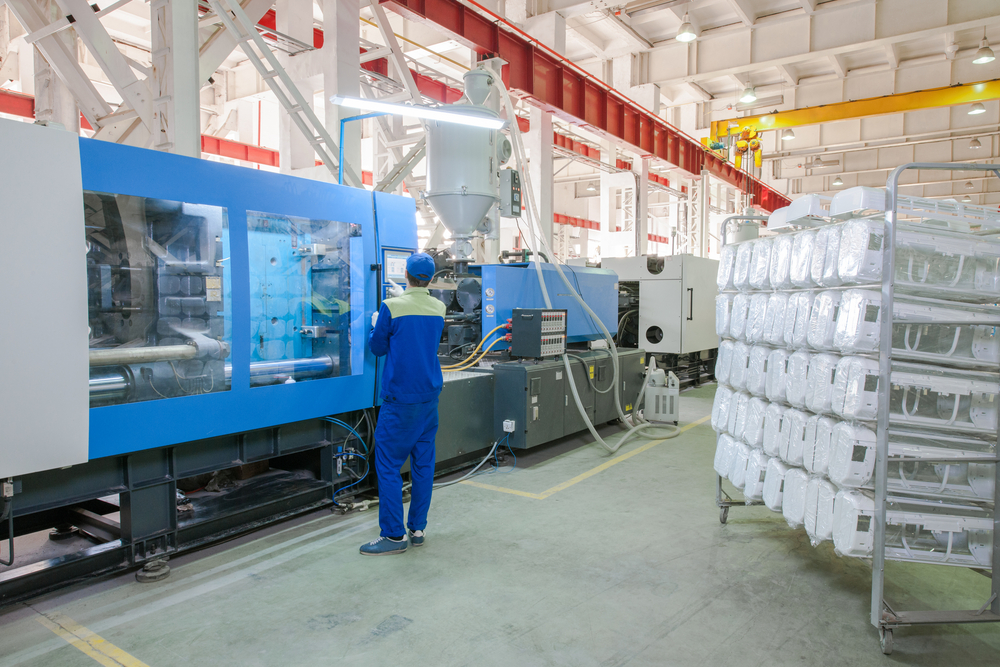The Advantages of Using Plastic Injection Molding for Custom Components Manufacturing
The Advantages of Using Plastic Injection Molding for Custom Components Manufacturing
Blog Article
Understanding the Fundamentals of Plastic Shot Molding Procedures
Plastic injection molding serves as a foundation of contemporary manufacturing, giving a systematic technique to generating complicated components with accuracy. Checking out these necessary aspects can expose exactly how even small modifications can lead to significant improvements in production outcomes, raising inquiries about the potential for development in this well-known process.
What Is Plastic Shot Molding?
Plastic shot molding is a commonly utilized manufacturing procedure that transforms thermosetting and polycarbonate materials right into specific and complicated shapes. This method is preferred for its capacity to generate high quantities of identical parts with outstanding precision, making it a vital technique in different sectors, including automotive, durable goods, and clinical devices.
The procedure includes thawing the picked plastic product and infusing it right into a mold under high stress. The mold, developed to the specs of the wanted part, enables the liquified plastic to materialize as it cools down and strengthens. As soon as the material has solidified, the mold is opened up, and the ended up part is ejected.
Plastic shot molding offers several benefits, including lowered waste, consistency in manufacturing, and the capacity to incorporate complex layouts that might be challenging with various other manufacturing methods. Furthermore, it sustains a broad variety of products, each giving unique properties that can be customized for specific applications. As markets remain to innovate, plastic injection molding stays at the forefront, allowing the advancement of sophisticated products that satisfy evolving customer needs.
The Injection Molding Process
The injection molding procedure is an innovative strategy that involves a number of vital stages to create high-quality plastic components. Plastic pellets are fed right into a heated barrel where they are thawed into a viscous liquid. This molten plastic is then injected under high pressure into a precision-engineered mold and mildew, which shapes the material into the desired type.
Once the mold and mildew is filled up, the plastic is permitted to strengthen and cool down, taking the form of the mold cavity. Cooling time is vital, as it impacts the cycle time and the last homes of the molded part. After sufficient cooling, the mold and mildew opens, and the ended up element is ejected making use of ejector pins.

Materials Made Use Of in Shot Molding
Various products can be utilized in the shot molding process, each offering unique homes that deal with certain applications. The most commonly used products include thermoplastics, thermosetting plastics, and elastomers.

Thermosetting plastics, like epoxy and phenolic materials, go through a chemical change throughout the healing procedure, resulting in a rigid, stringent framework. These products are perfect for applications needing high warmth resistance and architectural integrity, typically utilized in electric insulators and auto parts.
Elastomers, consisting of silicone and rubber-based products, supply flexibility and durability. Their one-of-a-kind properties make them ideal for applications that require flexibility, such as gaskets and seals.
In addition, specialized materials like bio-based plastics and composites are company website obtaining grip for their ecological benefits and boosted performance characteristics, broadening the scope of injection molding applications in different industries. Comprehending the homes of these products is important for choosing the suitable type for certain jobs.
Benefits of Injection Molding
Injection molding sticks out as an extremely reliable manufacturing process that uses countless advantages for creating intricate components with precision. Among the most significant benefits is the capability to produce detailed styles that would be impossible or tough to attain with various other approaches (Plastic Injection Molding). The procedure permits in-depth functions and limited resistances, ensuring high-grade parts
Furthermore, shot molding is recognized for its quick manufacturing capabilities, making it an excellent choice for high-volume production. Once the mold and mildew is created, parts can be generated swiftly, minimizing preparations and enhancing total performance. This efficiency not just reduces production costs yet likewise offers an affordable side on the market.
The convenience of materials made use of in shot molding additionally improves its allure. A variety of thermoplastics and thermosetting polymers can be utilized, permitting manufacturers to select materials that finest satisfy their details requirements, consisting of heat, strength, and adaptability resistance.
Additionally, the procedure lessens waste, as excess product can commonly be reused and reused. This sustainability aspect contributes to a reduced ecological impact, making shot molding an accountable production selection. Generally, the benefits of injection molding make it a favored technique for many industries.
Factors Affecting Product High Quality
While numerous elements can affect item quality in shot molding, comprehending these components important site is crucial for attaining optimal outcomes. Key aspects consist of product option, processing criteria, and mold and mildew layout.
Product option plays an important duty, as various polymers display one-of-a-kind residential properties that influence flowability, stamina, and thermal stability. Insufficient material option can lead to issues such as warping or insufficient filling.
Handling parameters, consisting of temperature, cycle, and pressure time, need to be carefully managed. Variations in these settings can result in variances in part measurements and surface area coating. For example, excessively heats might cause deterioration of the polymer, while poor stress can cause short shots.
Mold and mildew layout is equally important, as it identifies the circulation of the molten plastic and the cooling procedure. Badly created molds may result in irregular air conditioning rates, resulting in residual anxieties and dimensional mistakes.
Verdict
In final thought, plastic injection molding works as an important manufacturing procedure that makes it possible for the efficient production of premium parts. Proficiency of the injection molding process, including the understanding of products and the influence of numerous aspects on item quality, is important for achieving optimum results. The advantages of this approach, such as cost-effectiveness and style flexibility, more underscore its significance across several industries, strengthening its status as a recommended choice for high-volume manufacturing.
Plastic shot molding serves as a foundation of modern manufacturing, providing a systematic technique to creating intricate components with accuracy.Plastic injection molding supplies a number of benefits, consisting of lowered waste, uniformity in manufacturing, and the capability to integrate intricate styles that might be challenging with other making techniques (Plastic Injection Molding). As markets proceed to innovate, plastic injection molding remains at the center, making it possible for the development of sophisticated products that fulfill developing customer demands
The injection molding procedure is an innovative method that involves several vital phases to generate premium plastic parts.In conclusion, plastic injection molding serves as a crucial production process that allows the efficient production of top quality components.
Report this page